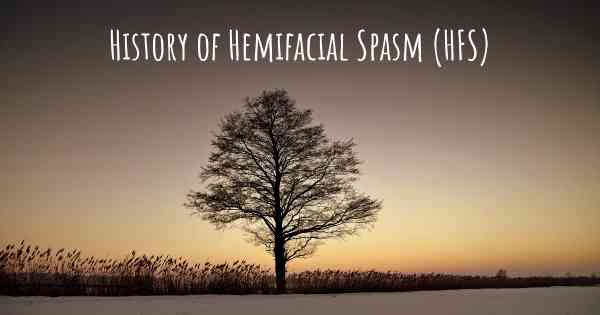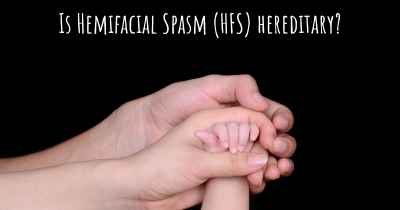What is the history of Hemifacial Spasm (HFS)?
When was Hemifacial Spasm (HFS) discovered? What is the story of this discovery? Was it coincidence or not?

Hemifacial spasm (HFS) is a neurological disorder characterized by involuntary contractions or twitching of the muscles on one side of the face. These spasms typically begin in the muscles around the eye and then spread to other facial muscles, causing various degrees of facial distortion. HFS can be a distressing condition, affecting a person's appearance, self-esteem, and quality of life. Understanding the history of HFS can shed light on the progress made in diagnosing and treating this condition.
The Early Observations
The first documented cases of HFS date back to the late 19th century. In 1873, a French physician named Charles Bell described a patient with facial spasms that were later recognized as HFS. Bell's observations were crucial in identifying the condition and distinguishing it from other facial movement disorders.
Advancements in Diagnosis
Over the years, medical professionals have made significant advancements in diagnosing HFS. In the early 20th century, electromyography (EMG) was introduced as a diagnostic tool. EMG allowed for the measurement and recording of electrical activity in the affected facial muscles, aiding in the accurate diagnosis of HFS.
Understanding the Underlying Causes
It wasn't until the latter half of the 20th century that researchers began to unravel the underlying causes of HFS. In the 1950s, it was discovered that HFS was often associated with compression or irritation of the facial nerve, which controls the muscles of the face. This compression was frequently caused by an abnormal blood vessel pressing against the nerve.
Further research in the 1980s and 1990s revealed that the abnormal blood vessel compressing the facial nerve was often an artery called the posterior inferior cerebellar artery (PICA). This finding led to the development of microvascular decompression (MVD) surgery, which aimed to relieve the compression and alleviate the symptoms of HFS.
Advances in Treatment
MVD surgery has become the gold standard treatment for HFS. The procedure involves identifying the compressing blood vessel and gently moving it away from the facial nerve. MVD has shown remarkable success rates, with many patients experiencing long-term relief from their symptoms.
However, not all patients are suitable candidates for surgery, and some may prefer non-invasive treatment options. In recent years, botulinum toxin injections have gained popularity as an alternative treatment for HFS. Botulinum toxin, commonly known as Botox, is injected into the affected facial muscles to temporarily paralyze them and reduce spasms. While the effects of Botox are temporary, repeated injections can provide significant symptom relief.
Ongoing Research
Despite the progress made in diagnosing and treating HFS, there is still ongoing research to further understand the condition. Scientists are exploring the genetic factors that may contribute to HFS, as well as investigating new medications and therapies to manage the symptoms.
In conclusion, Hemifacial spasm has a rich history of medical observations and advancements. From the early descriptions by Charles Bell to the development of diagnostic tools like EMG, the understanding of HFS has come a long way. The identification of the underlying causes and the introduction of MVD surgery and Botox injections have revolutionized the treatment options available to patients. Ongoing research continues to expand our knowledge of HFS, offering hope for even better management strategies in the future.








